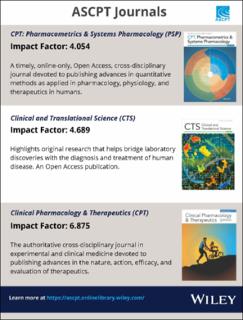| dc.contributor.author | Kvitne, Kine Eide | |
| dc.contributor.author | Robertsen, Ida | |
| dc.contributor.author | Skovlund, Eva | |
| dc.contributor.author | Christensen, Hege Staaland | |
| dc.contributor.author | Krogstad, Veronica | |
| dc.contributor.author | Wegler, Christine | |
| dc.contributor.author | Angeles, Philip Carlo Soriano | |
| dc.contributor.author | Wollmann, Birgit Malene Tovik | |
| dc.contributor.author | Hole, Kristine | |
| dc.contributor.author | Sandbu, Rune | |
| dc.contributor.author | Artursson, Per | |
| dc.contributor.author | Karlsson, Cecilia | |
| dc.contributor.author | Andersson, Shalini | |
| dc.contributor.author | Andersson, Tommy B. | |
| dc.contributor.author | Hjelmesæth, Jøran | |
| dc.contributor.author | Jansson-Löfmark, Rasmus | |
| dc.contributor.author | Åsberg, Anders | |
| dc.date.accessioned | 2021-10-21T09:07:04Z | |
| dc.date.available | 2021-10-21T09:07:04Z | |
| dc.date.created | 2021-08-26T16:52:37Z | |
| dc.date.issued | 2021 | |
| dc.identifier.issn | 1752-8054 | |
| dc.identifier.uri | https://hdl.handle.net/11250/2824429 | |
| dc.description.abstract | It remains uncertain whether pharmacokinetic changes following Roux-en-Y gastric bypass (RYGB) can be attributed to surgery-induced gastrointestinal alterations per se and/or the subsequent weight loss. The aim was to compare short- and long-term effects of RYGB and calorie restriction on CYP3A-activity, and cross-sectionally compare CYP3A-activity with normal weight to overweight controls using midazolam as probe drug. This three-armed controlled trial included patients with severe obesity preparing for RYGB (n = 41) or diet-induced (n = 41) weight-loss, and controls (n = 18). Both weight-loss groups underwent a 3-week low-energy-diet (<1200 kcal/day) followed by a 6-week very-low-energy-diet or RYGB (both <800 kcal/day). Patients were followed for 2 years, with four pharmacokinetic investigations using semisimultaneous oral and intravenous dosing to determine changes in midazolam absolute bioavailability and clearance, within and between groups. The RYGB and diet groups showed similar weight-loss at week 9 (13 ± 2.4% vs. 11 ± 3.6%), but differed substantially after 2 years (−30 ± 7.0% vs. −3.1 ± 6.3%). At baseline, mean absolute bioavailability and clearance of midazolam were similar in the RYGB and diet groups, but higher compared with controls. On average, absolute bioavailability was unaltered at week 9, but decreased by 40 ± 7.5% in the RYGB group and 32 ± 6.1% in the diet group at year 2 compared with baseline, with no between-group difference. No difference in clearance was observed over time, nor between groups. In conclusion, neither RYGB per se nor weight loss impacted absolute bioavailability or clearance of midazolam short term. Long term, absolute bioavailability was similarly decreased in both groups despite different weight loss, suggesting that the recovered CYP3A-activity is not only dependent on weight-loss through RYGB. | en_US |
| dc.language.iso | eng | en_US |
| dc.publisher | Wiley | en_US |
| dc.rights | Attribution-NonCommercial-NoDerivatives 4.0 Internasjonal | * |
| dc.rights.uri | http://creativecommons.org/licenses/by-nc-nd/4.0/deed.no | * |
| dc.title | Short- and long-term effects of body weight loss following calorie restriction and gastric bypass on CYP3A-activity – a non-randomized three-armed controlled trial | en_US |
| dc.type | Journal article | en_US |
| dc.type | Peer reviewed | en_US |
| dc.description.version | publishedVersion | en_US |
| dc.source.journal | Clinical and Translational Science (CTS) | en_US |
| dc.identifier.doi | 10.1111/cts.13142 | |
| dc.identifier.cristin | 1929083 | |
| dc.relation.project | Notur/NorStore: NN9736K | en_US |
| cristin.ispublished | true | |
| cristin.fulltext | original | |
| cristin.qualitycode | 1 | |

